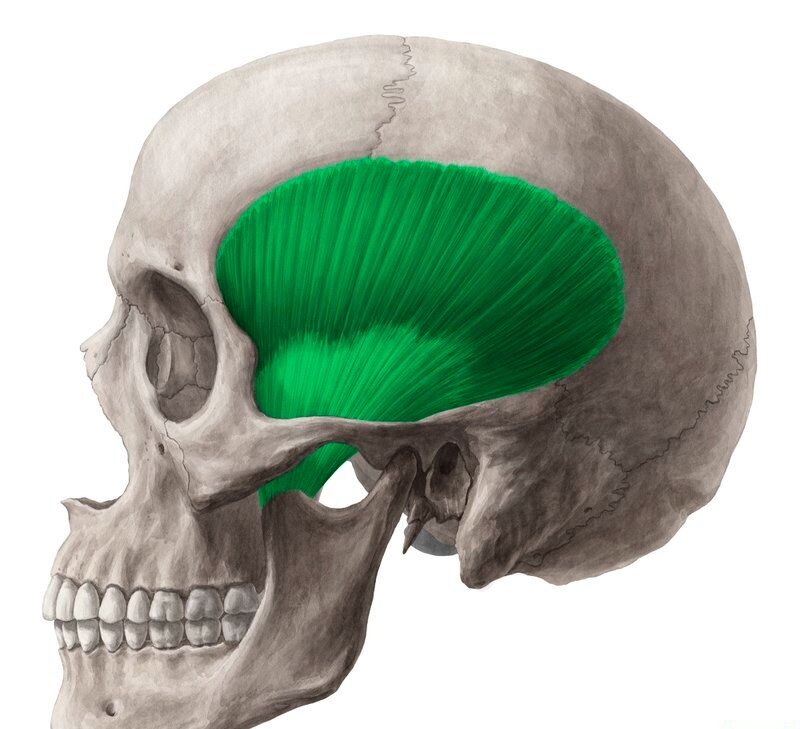Muscle of the Day: Temporalis
Have you ever had a headache right around the sides of your head, or pain in your jaw when eating? The temporalis is one of the muscles used when chewing. It is broad and fan shaped, and is located on each side of your head, in an area commonly referred to as the temple. This muscle is commonly involved in jaw pain and headaches.
Origin: Temporal fossa (up to inferior temporal line), Temporal fasciaI
Insertion: Apex and medial surface of coronoid process of mandible
Actions: Elevation, protrusion, retraction of the mandible (closes the jaw, moves the jaw to the side. moves the jaw back to neutral position, holds the bottom of the jaw (mandible bone) in a resting position)
The temporal muscle is a powerful muscle of the temporomandibular joint (TMJ) and it is commonly involved in TMJ dysfunction. Tension or trigger points in the temporalis muscle can cause pain in the temporal area, jaw, and tension headaches. Trigger points in the muscle can cause referred pain in the jaw, cheek, and upper teeth. You may experience pain when biting down and your teeth may be sensitive, especially to hot and/or cold temperatures. Headaches located in the areas of the side of your head may also be caused by tension in the temporalis.
Common causes of tension of the temporalis include:
Trauma: Whether it is because of a fall or you have a hard blow to the side of the head you may develop trigger points in the temporalis and other muscles in the area.
A prolonged immobilization (e.g. after a jaw fracture)
Teeth grinding (bruxism): Many people grind their teeth and clench their jaw especially when under stress. People who grind their teeth most often do it while sleeping and may not realize they are doing it. Another thing that falls under this is chewing gum a lot. Gum chewing constantly works the temporalis muscle which can lead to the development of trigger points. These things can lead to overwork of the temporalis and result in pain
A dental intervention during which the person's mouth had to be open for a long period of time
Forward Head Posture: If you have forward head posture where your head extends out in front of the body, the temporalis stays in a stretched position and will likely develop trigger points in the muscle
3 Things You Can Do To Reduce Tension in the Temporalis Muscle
Sleep Tape: There are strips of tape that can be purchased in stores or online that can help decrease tension in the temporalis while you sleep if you tend to breath with your mouth (1:19 in video below)
2. Temporalis massage: Place your fingertips in front of your ear at the jaw joint and massage up and diagonally using gentle pressure. Massage the entire muscle feeling for knots, tight bands of tissue, or areas that cause pain to increase. If you find one these, stop and apply gentle to medium pressure for 10 seconds and then continue the massage looking for other tender areas. Trigger points respond best to several short treatments spread throughout the day. (2:00 in video below)
3. Practice nose breathing: Breathing in and out through your nose will help keep your jaw in a relaxed position
Written by Daniel Le, DPT


